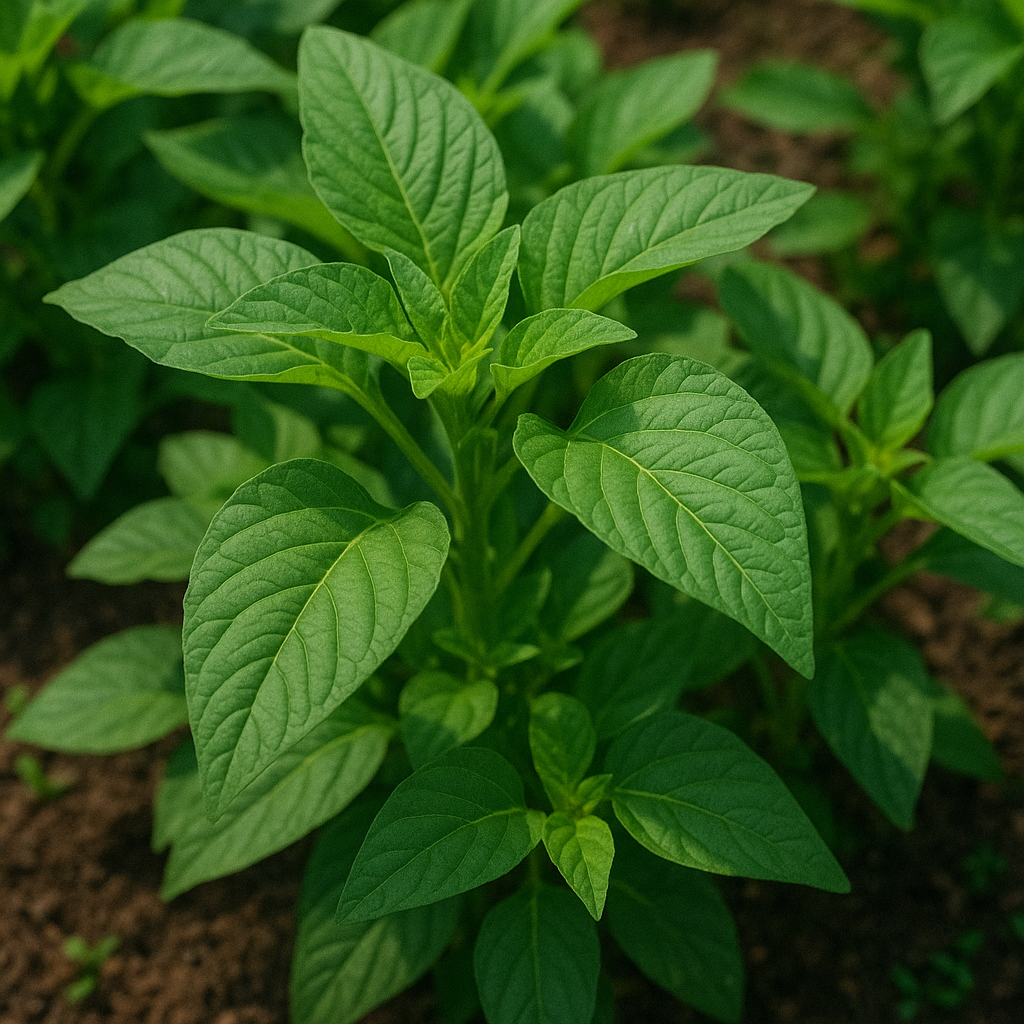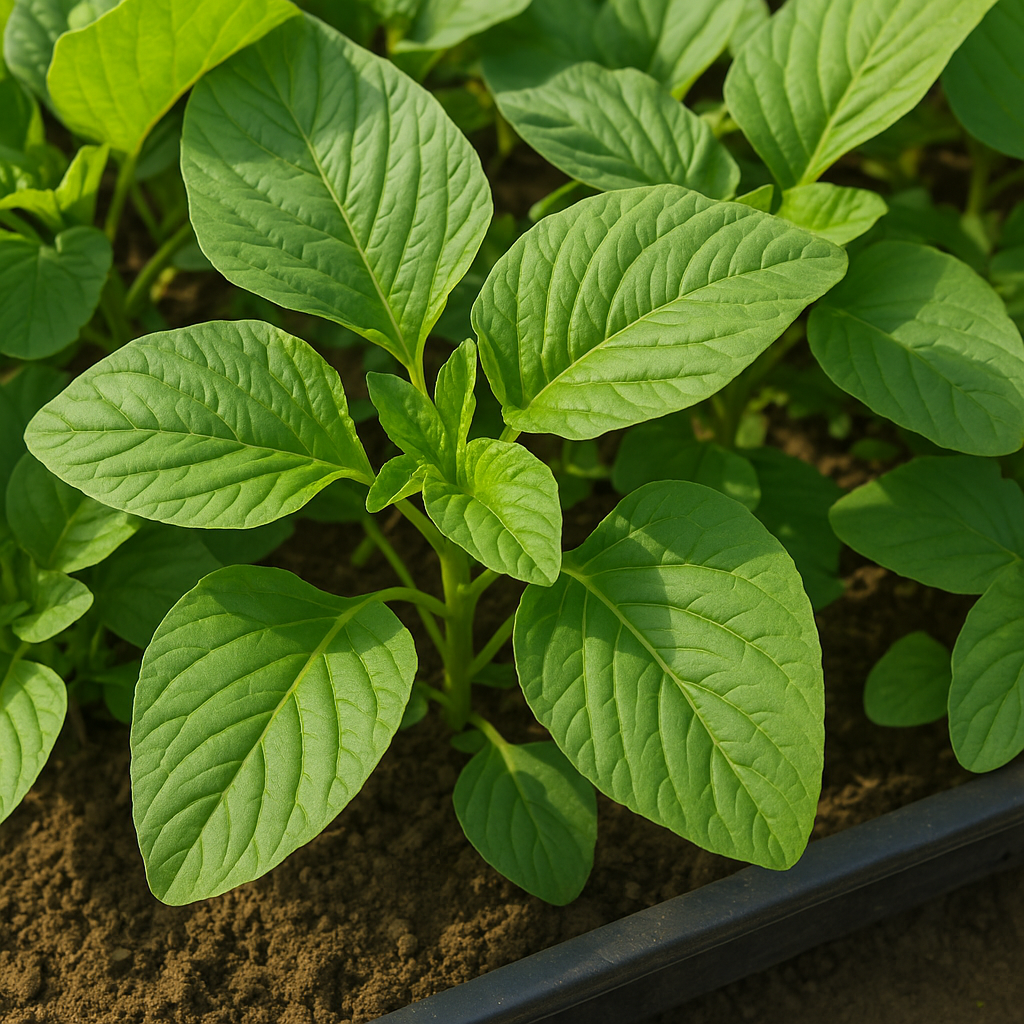Hokowase Strawberry: A Sweet and Early-Season Delight for Your Garden
About Hokowase Strawberry
The Hokowase Strawberry is a delicious early-season variety of strawberry that is cherished for its sweet flavor, firm texture, and bright red color. Developed in Japan, this variety is known for high yields and resilience to various growing conditions, making it perfect for both gardeners and commercial growers.
Hokowase strawberries are particularly admired for their early fruiting ability, providing fresh, juicy strawberries long before other varieties. Whether you’re growing them in containers, raised beds, or in the ground, Hokowase Strawberries will reward you with an abundance of fruit.

At Organicindiaseeds.com we offer high-quality Hokowase Strawberry seeds to help you grow this premium variety in your garden or on your patio.
Why Grow Hokowase Strawberry?
-
Early Fruiting: One of the first strawberries to fruit in the season, giving you an early harvest.
-
Sweet and Juicy: Known for its exceptional sweetness and firm texture, perfect for fresh eating or making jams.
-
High Yield: Produces an abundant crop, even in smaller spaces, making it ideal for home gardeners.
-
Disease Resistance: Resistant to common strawberry diseases like leaf spot and powdery mildew, making it easier to grow.
When to Plant Hokowase Strawberry
Hokowase Strawberries prefer cool temperatures and should be planted in early spring when the soil has thawed and the temperatures are mild.
-
Ideal Planting Time: Spring, once the last frost has passed and soil temperatures have reached 50°F–60°F (10°C–15°C).
-
Indoor Starting: If you're in a cooler climate, start seeds indoors 6–8 weeks before the last frost and transplant them outdoors once the risk of frost has passed.
-
Direct Sowing: If you're in a mild climate, you can directly sow Hokowase Strawberry seeds outdoors, but be sure to plant them in well-prepared soil.
Where to Grow Hokowase Strawberry
Hokowase Strawberries thrive in a variety of conditions but prefer full sun and well-drained soil.
-
Sunlight: Plant in an area that gets at least 6-8 hours of direct sunlight per day for best fruit production.
-
Soil: These strawberries grow best in loamy soil with good drainage and a slightly acidic pH of 5.5–6.5. Amending soil with organic compost can improve texture and nutrient content.
-
Space: Space plants about 12–18 inches apart to allow room for runners and proper air circulation.
How to Grow Hokowase Strawberry

-
Planting Seeds:
-
Start by soaking seeds for 24 hours to enhance germination.
-
Sow seeds 1/8 inch deep in seed-starting mix, covering lightly with soil.
-
Keep the soil moist and warm (around 70°F–75°F (21°C–24°C)) until seeds germinate, which typically takes 2–3 weeks.
-
-
Transplanting:
-
Once seedlings have grown large enough, harden off by gradually exposing them to outdoor conditions for several days.
-
Transplant seedlings into well-prepared soil once the danger of frost has passed, ensuring the plants have enough room to spread.
-
-
Watering:
-
Keep the soil moist, especially during dry spells. Strawberries prefer consistent moisture, but avoid overwatering, which can lead to root rot.
-
Water at the base of the plant to keep the leaves dry and prevent fungal diseases.
-
How to Care for Hokowase Strawberry
Hokowase Strawberries require minimal care once established. Here’s how to keep them healthy and productive:
-
Fertilizing: Use a balanced fertilizer with low nitrogen to avoid excessive leaf growth. Fertilize in early spring when new growth starts.
-
Mulching: Apply a layer of mulch around the plants to keep the soil moist, suppress weeds, and regulate soil temperature.
-
Pruning: Remove old, dead leaves to encourage new growth. After the first harvest, cut back runners to prevent overcrowding.
-
Pest Control: Regularly inspect for pests like slugs and aphids. If needed, use organic pest management techniques like neem oil or insecticidal soap.
-
Winter Care: In colder climates, cover the plants with mulch or bring them indoors for the winter if growing in containers.
Companion Plants for Hokowase Strawberry
Hokowase Strawberries grow well with other companion plants that help improve soil conditions and deter pests:
-
Basil: Improves flavor and attracts beneficial insects like bees.
-
Spinach: Grows well in the shade of strawberries and helps conserve soil moisture.
-
Garlic: Helps repel aphids and other common pests in strawberry patches.
-
Lettuce: Thrives in the same conditions and provides a good ground cover.
Image Placement Suggestion: Include a photo of Hokowase Strawberries growing alongside companion plants like basil and spinach to showcase a well-maintained garden.
Harvesting Hokowase Strawberry
Hokowase Strawberries typically begin to fruit 4–6 weeks after blooming, with the first harvest ready in late spring to early summer.

-
Signs of Ripeness: The fruit will be deep red and firm to the touch.
-
Harvesting Method: Gently twist or cut the strawberry from the stem, leaving the green calyx intact for best preservation.
Final Thoughts on Hokowase Strawberry
Hokowase Strawberries are a fantastic choice for home gardeners looking to add sweet, flavorful fruit to their garden early in the season. With their high yield, delicious taste, and disease resistance, this variety is perfect for both small garden spaces and larger plots. Start growing your own Hokowase Strawberries from premium seeds available at Organicindiaseeds.com and enjoy fresh, homegrown strawberries all season long!



Leave a comment
This site is protected by hCaptcha and the hCaptcha Privacy Policy and Terms of Service apply.